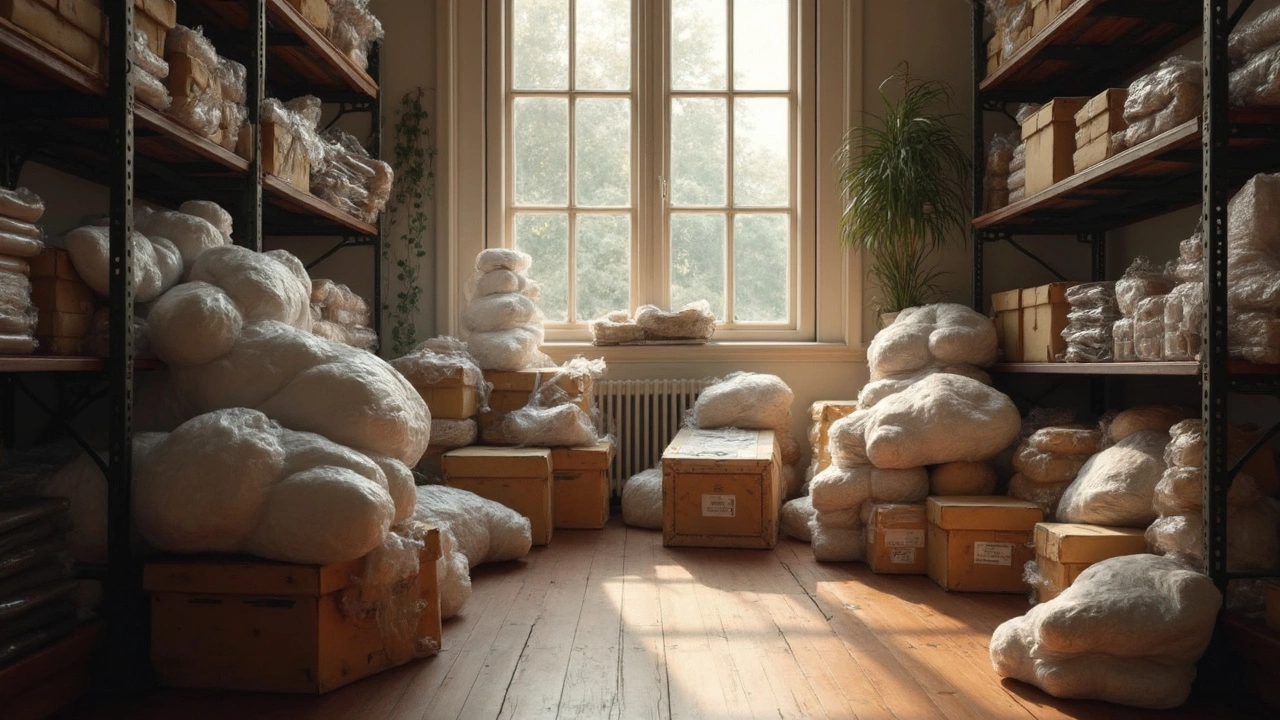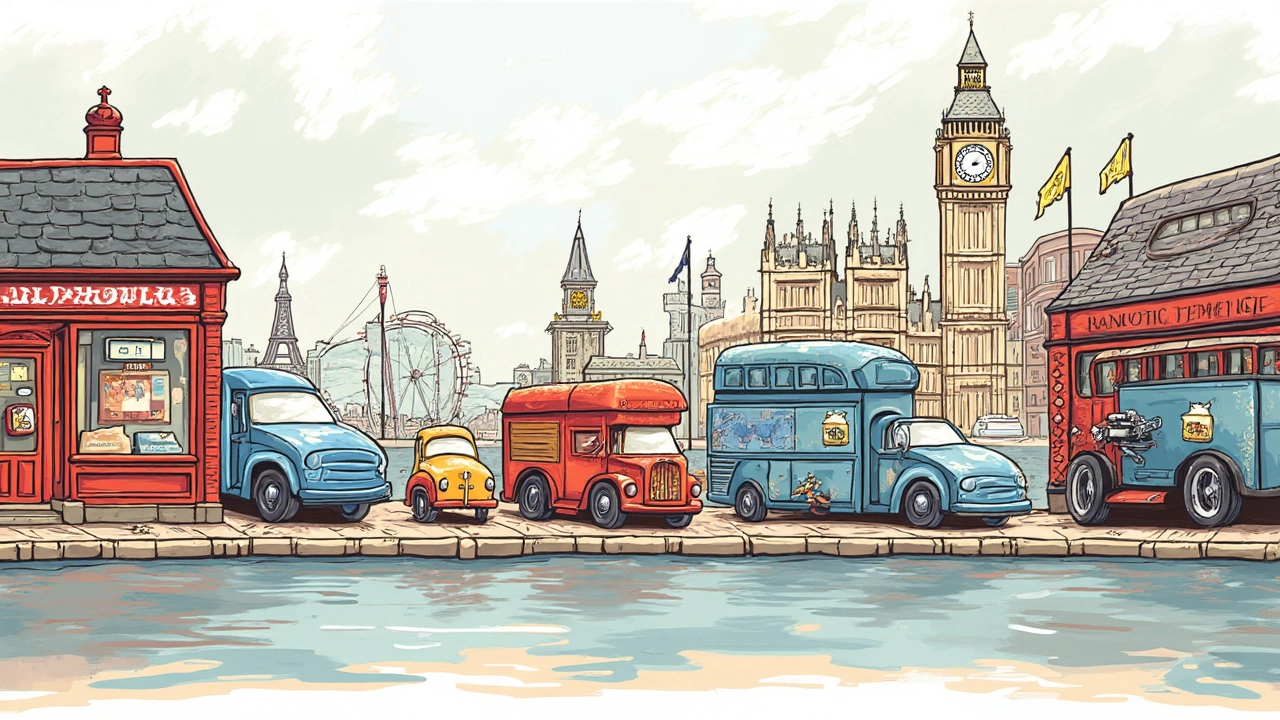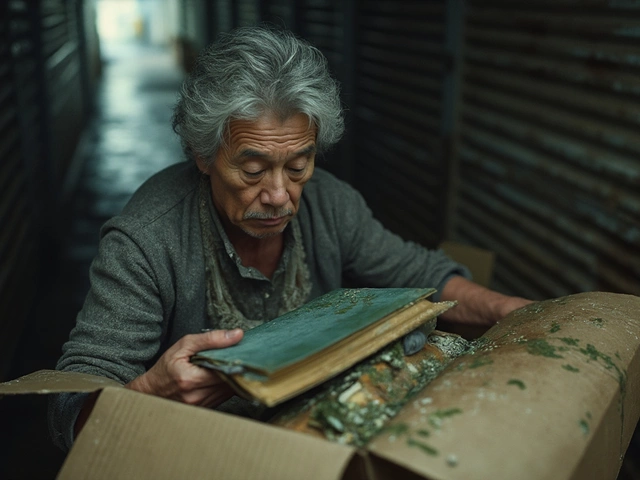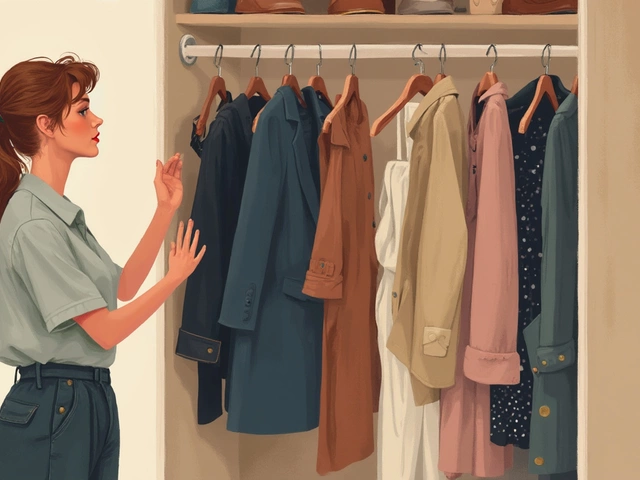 7
Apr,2025
7
Apr,2025
When it comes to stashing away your beloved stuff, bubble wrap might be the first thing that pops into your head. It’s a go-to for many, and for good reasons—it’s cheap, versatile, and who can resist popping a few bubbles now and then? But if you're thinking long-term storage, you might want to dive a bit deeper into whether bubble wrap is really doing the trick.
Okay, so here's the scoop: bubble wrap is great at cushioning and protecting items from scratches and minor impacts. That's why it’s a top pick for short-term moves and shipping. But when it comes to long-term storage, there are a few things you might want to consider. Over time, the bubbles can lose their air, meaning less protection against bumps and scratches.
- Understanding Bubble Wrap
- Pros and Cons of Bubble Wrap for Storage
- Best Practices for Using Bubble Wrap
- Alternatives to Bubble Wrap
- Making the Right Choice: Tips and Recommendations
Understanding Bubble Wrap
Bubble wrap has been a favorite packing material since its invention in the 1960s. It's not just about those fun, satisfying pops (although, let's be honest, that's a big part of the love affair). Bubble wrap is popular because it’s a simple yet effective way to keep items protected.
Here's how it works: tiny air-filled pockets within the wrap offer a cushion against knocks and scratches. This makes bubble wrap perfect for protecting delicate items, from electronics to glassware, during shipping or short-term storage. The material is usually made from polyethylene, a type of plastic that offers flexibility and resilience.
You might think that all bubble wrap is the same, but there are variations. For example, the size of the bubbles can differ. You've got small bubbles for lighter items, and larger bubbles for heavier or more fragile things. The standard roll of bubble wrap has bubbles about 1/4 inch in diameter, perfect for everyday packaging needs.
So why do people use bubble wrap for long-term storage? Mainly because it's cost-effective and widely available. You can grab a roll at almost any office supply store or order it online without breaking the bank.
As practical as it is, bubble wrap isn't perfect. Over time, the air inside the bubbles can leak out. This means the same level of protection you had on day one might not last, especially in environments that fluctuate in temperature. If your storage area heats up and cools down frequently, those little air cushions can deflate faster.
Aside from being a bubble-popping joy, bubble wrap is a packaging staple for a reason. But if you're thinking about keeping those boxes in the attic for a decade, it might be worth considering its long-term limitations.
Pros and Cons of Bubble Wrap for Storage
When considering bubble wrap for packing away your items, it’s like looking at a double-edged sword. On one side, it’s incredibly useful, but on the flip side, there are some limitations you’ve got to know about before you wrap up your decision.
Let's start with the perks. One of the top reasons people reach for the bubble wrap roll is its amazing cushioning ability. It’s lightweight yet absorbs shocks which could be a lifesaver for fragile items during a bumpy ride to a storage unit. And let’s not forget, it’s waterproof, providing that extra layer of protection in case your storage spot isn’t so great at keeping things dry.
Now, here's the catch. Long-term storage could be an issue with good old bubble wrap. Over months or years, the air inside those bubbles can slowly deflate, reducing their protective power. Plus, if you’ve got items made of particular fabrics or finishes, bubble wrap’s plastic material can sometimes cause discoloration or stick onto surfaces—definitely not the surprise you want when finally unwrapping your stuff years from now.
Let’s talk about stacking. Bubble wrap is notorious for being a little unstable in the stacking department. If you’re putting away boxes wrapped in this, there’s a chance they might shift and topple. And environmentally speaking, bubble wrap isn’t all that great—it’s not always recyclable, leaving more waste behind.
- Pros: Lightweight, shock-absorbing, waterproof.
- Cons: Deflates over time, risks surface damage, non-recyclable.
Still, if used wisely, bubble wrap can be a solid part of your storage strategy. It's just about balancing those pros and cons to match your storage needs!

Best Practices for Using Bubble Wrap
So you’ve got your bubble wrap, and you’re ready to tuck away those important items. But wait a second, using it the right way can make a world of difference in keeping your stuff safe.
First off, knowing which side of the bubble wrap to use is crucial. Always wrap your items with the bubbles facing inward. This way, the bubbles make direct contact with the item, providing that crucial padding.
When wrapping fragile pieces like glassware or electronics, double wrap them for extra protection. One layer might not be enough for those really delicate items. Trust me, you don’t want to find out the hard way!
Securing your wrap is another biggie. Use high-quality packing tape to hold everything snug. This keeps the wrap in place and prevents movement during storage.
It's also wise to label your wrapped items. It’s easy to forget what’s inside when a batch of bubble-wrapped objects looks like clones of each other.
Consider the storage environment too. Temperature and humidity can affect bubble wrap negating its protective abilities. Store wrapped items in a cool, dry place to keep them in tip-top shape.
- Bubbles in: Wrap with bubbles facing the object.
- Double layer: For extra protection, especially for fragile items.
- Secure tightly: Use good packing tape.
- Label items: So you know what's wrapped.
- Storage conditions: Cool and dry areas are best.
If you’re wondering about the numbers game, a standard roll of bubble wrap usually cushions as much as 50-60 items, depending on the size—pretty handy! Following these steps, your cherished items will be set for that comfortable snooze in storage.
Alternatives to Bubble Wrap
So, if you’re wondering what else you can use aside from bubble wrap, you’re in the right spot. Turns out, there’s a whole lineup of materials that can work wonders for long-term storage.
First up, consider foam rolls. These are like bubble wrap’s sturdier cousin. They offer snug cushioning without deflating over time, making them excellent for furniture or electronics. The steady thickness gives consistent protection, which is a big win for your peace of mind.
Then there’s packing peanuts. Remember them? They’re light and fill up awkward spaces effortlessly but be sure to go for biodegradable ones. Old-school, but they do the job!
For those who want to think outside the box, try using old blankets or towels. They’re reusable and offer a soft barrier, which can be perfect for larger items like furniture.
If you’re storing paper items or photos, acid-free tissue paper is your friend. It’ll protect from dust and moisture while preventing any nasty chemical reactions over time.
And hey, what about air pillows? They’re basically sleeves of air, much like bubble wrap, but use less plastic and can often be reused.
Last but definitely not least, think cardboard dividers. They’re great for separating fragile items like glassware. Plus, you can often find them for free at your local stores looking to recycle excess boxes.
With these options, you can keep your possessions safe and snug, knowing you’ve chosen the best method for long-term storage.

Making the Right Choice: Tips and Recommendations
Alright, let’s break down how you can keep your stuff safe and sound during those long months—or even years—of storage. Choosing the right packaging can be a game-changer for your peace of mind and your wallet.
First off, think about what you're storing. Bubble wrap is perfect for fragile items like glassware or electronics, but for fabric items or heavy furniture, it might not be ideal. You need materials that breathe, like fabric covers, to prevent moisture buildup.
Consider using bubble wrap in combination with other materials. For example, wrap breakables in bubble wrap, then place them in sturdy cardboard or plastic totes. This gives you a double layer of protection, adding stability and keeping dust at bay.
Check your storage climate. Is the place dry or humid? In a humid environment, even the best-wrapped items can get moldy. Silica gel packs or charcoal can absorb moisture, giving an added layer of assurance.
- Inspect your bubble wrap—and replace it if needed. Regularly check your items to ensure the wrap hasn’t deflated. This might mean repackaging every year or so.
- Label your boxes. Trust me, this saves loads of time when you're finally digging back through your stuff.
- Stack wisely. Heavy items should always go on the bottom, lighter on top, to prevent crushing the bubbles' air pockets.
- Consider costs. Sometimes, using bubble wrap extensively isn’t cost-effective. Weigh bubble wrap versus other more permanent solutions for big or high-value items.
A little planning at the start can save you headaches later on. Whether you stick with trusty bubble wrap or explore alternatives, making smart choices will keep your treasures safe for the long haul, no sweat.




